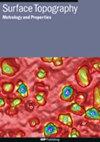使用二氧化锡纳米添加剂改善聚α-烯烃基础油的润滑性能
IF 2
3区 材料科学
Q2 ENGINEERING, MECHANICAL
引用次数: 0
摘要
以往的研究大多集中于二氧化锡纳米流体的热性能。为了了解 SnO2 纳米粒子作为添加剂的润滑性能,本研究调查了添加 SnO2 纳米粒子对聚α-烯烃 6 基础油摩擦学性能的影响。采用双步法将 SnO2 纳米粒子分散在以油酸为表面活性剂的基础油中。通过透射电子显微镜确认了 SnO2 纳米粒子的形状和尺寸,并通过动态光散射测试检验了 SnO2 纳米粒子的分散稳定性。在球-板往复滑动结构的通用机械摩擦磨损试验仪上对二氧化锡纳米流体的润滑性能进行了研究。研究发现,二氧化锡纳米流体具有良好的稳定性和分散性。二氧化锡纳米颗粒的加入降低了钢-钢三元对的摩擦和磨损。随着二氧化锡纳米粒子浓度的增加,摩擦和磨损降低的积极影响变得更加显著。在这项研究中,含有 5wt% SnO2 纳米粒子和 5wt% 油酸的纳米流体被认为是最佳成分,其润滑性能最佳,摩擦系数降低了 13.8%,磨损体积损失降低了 41.4%。通过扫描电子显微镜、能量色散光谱仪和白光干涉仪观察磨损轨迹后发现,磨损机制主要是磨料磨损和粘着磨损。基础油摩擦学性能的提高归因于二氧化锡三聚体薄膜和油酸三聚体层的形成,它们降低了剪切阻力,分离了接合区域并承受了载荷。本研究的结果可作为开发高性能纳米流体的参考。本文章由计算机程序翻译,如有差异,请以英文原文为准。
Improving the lubricating performance of poly-alpha-olefin base oil using SnO2 nanosized-additives
The majority of previous studies have been focused on the thermal properties of SnO2 nanofluids. In order to understand the lubricating performance of SnO2 nanoparticles as additives, the current study investigates the effects of the addition of SnO2 nanoparticles on the tribological properties of poly-alpha-olefin 6 base oil. The dual-step method is utilized to disperse the SnO2 nanoparticles in base oil with oleic acid as surfactant. The shape and size of SnO2 nanoparticles are confirmed by transmission electron microscopy, and the dispersion stability of SnO2 nanoparticles is examined by dynamic light scattering tests. The lubricating properties of SnO2 nanofluids are explored on a universal mechanical tribometer with a ball-on-plate reciprocating sliding configuration. It is found that the SnO2 nanofluids show good stability and dispersibility. The addition of SnO2 nanoparticles decreases the friction and wear for steel-steel tribo-pairs. The positive effects on friction and wear reductions become more significant with increasing concentrations of SnO2 nanoparticles. In this work, nanofluids containing the 5wt% SnO2 nanoparticles and 5wt% oleic acid is considered as the optimum composition, which shows the best lubricating performance with the reductions of 13.8% in coefficient of friction and 41.4% in wear volume loss. After observing the wear tracks by scanning electron microscopy, energy dispersive spectrometer and a white-light interferometer, it is shown that the wear mechanisms are dominated by abrasive wear and adhesive wear. The enhancement in tribological properties of base oil is attributed to the formation of SnO2 tribo-film and oleic acid tribo-layer which reduces the shearing resistance, separates the mating areas and withstands the loads. The findings obtained in this study can be used as references in the development of high-performance nanofluids.
求助全文
通过发布文献求助,成功后即可免费获取论文全文。
去求助
来源期刊

Surface Topography: Metrology and Properties
Materials Science-Materials Chemistry
CiteScore
4.10
自引率
22.20%
发文量
183
期刊介绍:
An international forum for academics, industrialists and engineers to publish the latest research in surface topography measurement and characterisation, instrumentation development and the properties of surfaces.
 求助内容:
求助内容: 应助结果提醒方式:
应助结果提醒方式:


